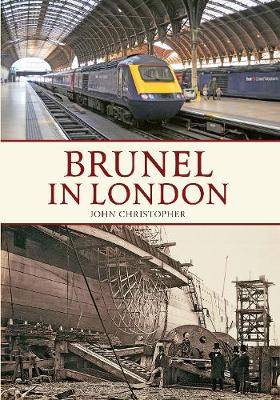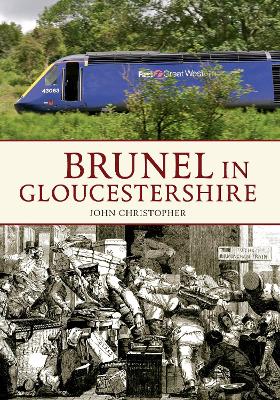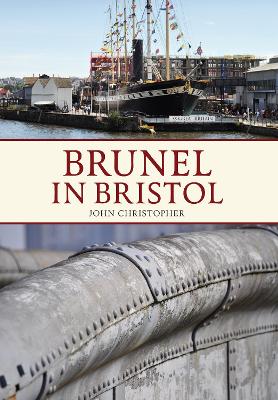Brunel in ...
4 total works
Cornwall marks the extreme south-western extent of Brunel's kingdom and the county is surprisingly rich in his works. The Royal Albert Bridge, which crosses the River Tamar, connected the broad gauge network with the Cornwall and West Cornwall railways - both engineered by Brunel - to take the trains coming from Paddington all the way to Penzance via a series of over sixty spectacular timber viaducts. The original viaducts have gone now, either modified or replaced over the years, but in many cases the masonry piers remain like rows of monolithic sentinels. As a result there is much to reward the Brunel hunter, including the branch line to Falmouth and many surviving examples of his railway stations. There are other connections, literally. His Great Eastern steamship was the first vessel to successfully lay a telegraphic cable to connect Europe and the USA - a story told at the historic Porthcurno Telegraph Museum near Land's End.
John Christopher, an acknowledged expert on Brunel, takes us on a tour of Cornwall, exploring his works in the county. This is the latest in a series of books which are about rediscovering Brunel's works in your area.
John Christopher, an acknowledged expert on Brunel, takes us on a tour of Cornwall, exploring his works in the county. This is the latest in a series of books which are about rediscovering Brunel's works in your area.
Brunel and London. It might not seem an obvious association, but John Christopher puts the case that it was London, not Bristol, that was the most important centre of Brunel's activities. It was here that he lived, worked and died. The city is dotted with examples of his works, some obvious and some less so, from the subaquatic Thames Tunnel between Wapping to Rotherhithe where he cut his engineering teeth and was almost killed in a sudden deluge, to the Hungerford suspension bridge between Charing Cross and the South Bank - mostly forgotten but parts of it still exist - the two stations at Paddington with the Great Western Railway main line running to the west and, of course, his final steamship, the vast Great Eastern which was built at Millwall and marked the end of his career and his life. Less familiar are Brunel's connections with the Crystal Palace, designed by Joseph Paxton for the Great Exhibition of 1851, and the two towers he built when it was relocated to Sydenham in south London. John Christopher, an acknowledged expert on Brunel, takes us on a tour of London, examining the relationship between city and engineer. This is the latest in a series of books which are about rediscovering Brunel's works in your area.
Isambard Kingdom Brunel, Britain's greatest engineer is perhaps best known for his ships and the Bristol-London main line, but he also designed many structures in Gloucestershire too. Most notable of the local designs include the tubular bridge crossing the Wye from England to Wales at Chepstow, which was the precursor of the Royal Albert Bridge at Saltash. Brunel oversaw the construction of the line from Swindon to Gloucester, and the Broad Gauge goods shed at Stroud station, as well as the station in Cirencester, now surrounded by a car park. Other notable structures include the Mickleton and Haie Hill tunnels, Brunel was heavily involved in the surveying of the major rail routes in the county too, being the engineer for the Bristol to Gloucester route, which opened in 1844 and undertook surveys of the Gloucester-Birmingham railway line too. John Christopher, an acknowledged expert on Brunel, with numerous books to his name, takes us on a tour of the county, showing the effect that Brunel had on the railways, roads and rivers and the transport network of Gloucestershire.
Bristol and Brunel, the two are inseparable. What would the Avon Gorge be without the slender lines of the suspension bridge? The Floating Harbour without the iron-hulled Great Britain back in the dry dock where she was built, or the magnificent Great Western Railway without its Temple Meads station? Quite clearly that most celebrated of Victorian engineers, Isambard Kingdom Brunel - the 'Little Giant' in the stove-pipe hat - has contributed more iconic landmarks to the cityscape than anyone else. And in return Bristolians like to claim Brunel as their own, an 'adopted son' of the city, although it wasn't always an easy relationship. Brunel never lived in Bristol, but the city is home to the richest concentration of his surviving works to be found anywhere; not just the big stuff but also the less well known works including a number of 'other' bridges and at least three railways. John Christopher, an acknowledged expert on Brunel, takes us on a tour of Bristol, examining the relationship between city and engineer, and exploring his works. This is the latest in a series of books which are all about rediscovering the Brunel on your doorstep.



